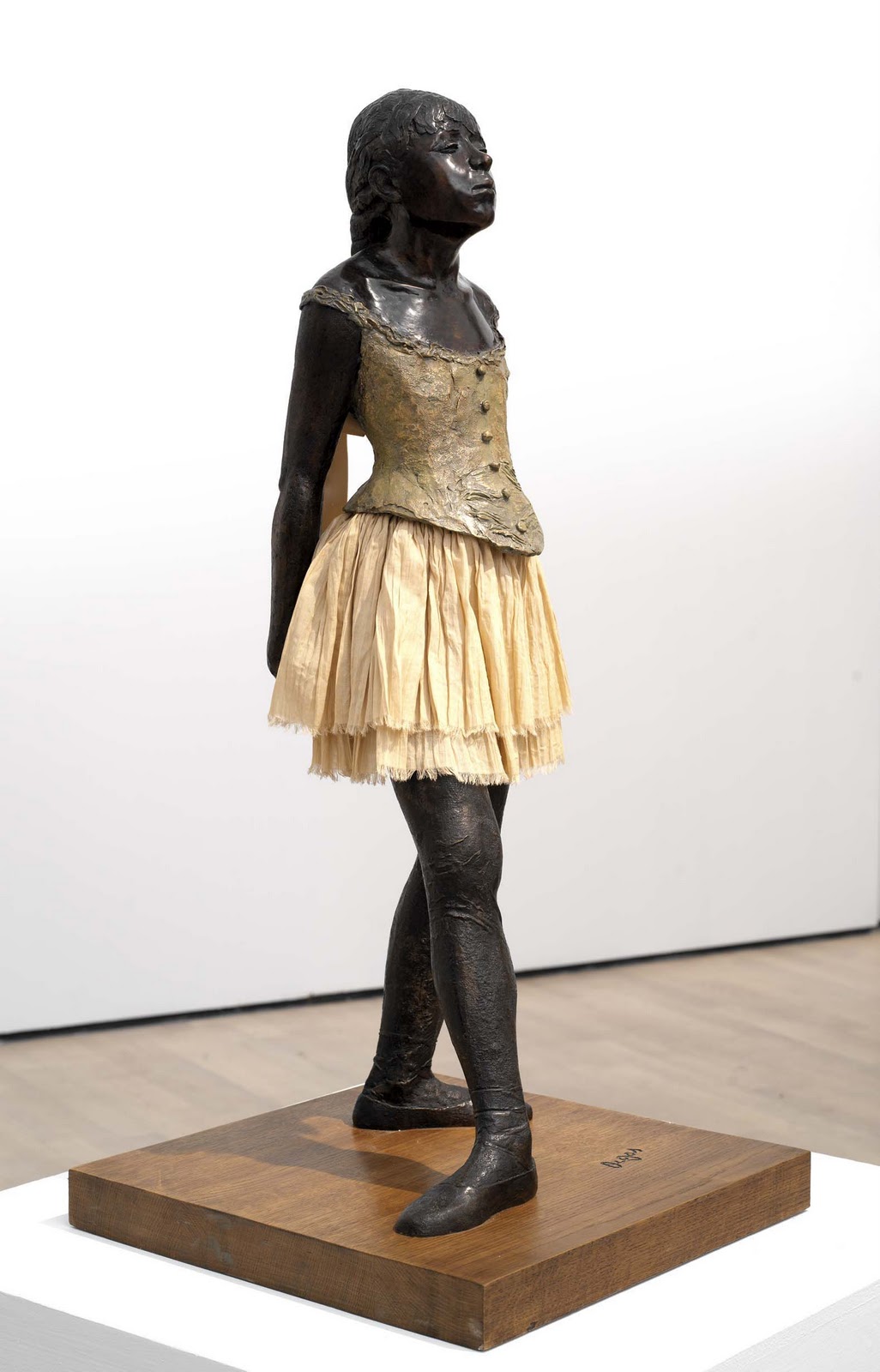On this beautiful Sunday we’ve prepared something special for you. It is not a common knowledge that Edgar Degas also created sculptures. When he died in 1917, 150 wax or clay sculptures were found in his studio. These statues had remained more or less unknown to the public while the artist was alive, except for Dancer Aged 14 which Degas had shown in the Impressionist Exhibition in 1881 in Paris. Naturally coloured, fitted with real hair, dressed in a tutu and real dancing slippers, it was an example of hyperrealism; it is verismo taken to the extreme. Presented in a showcase like a specimen in a museum, it revealed Degas playing an anthropologist or a naturalist. The critics were not mistaken: the work was violently accused of representing the girl in a bestial manner. She was being compared to a monkey or an Aztec; she had a face "upon which all the vices imprint their detestable promises, the mark of a particularly vicious character". Degas thus took realism to its logical conclusion by depicting the society of his time in a barefaced, almost scientific way untainted by hypocrisy. The bronze edition made after his death, including the copy in the Musée d'Orsay, tried to preserve the characteristics of the wax statue as much as possible. The glass cage is the only element that Degas himself wanted, asserting the Dancer's status as a work of art.
See you tomorrow!


 Edgar Degas
Edgar Degas